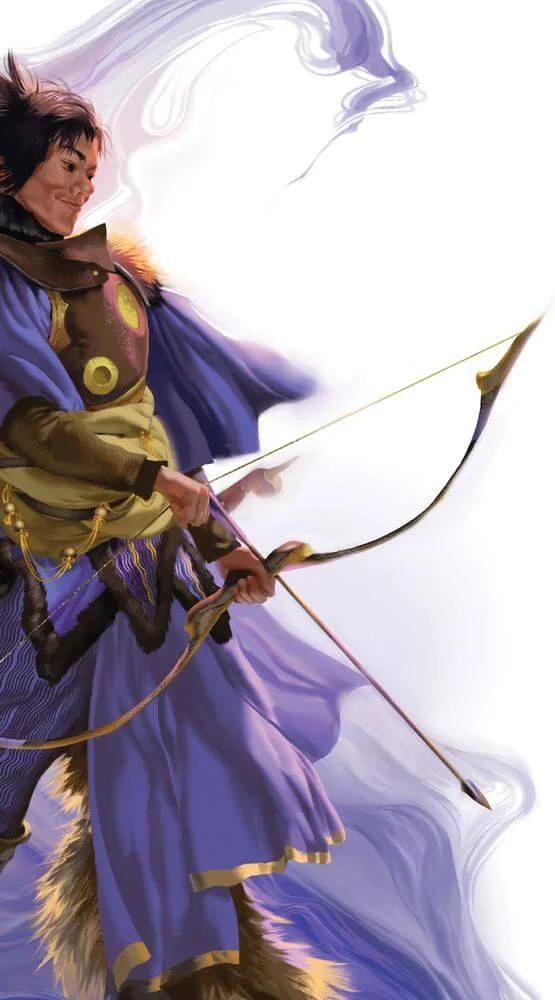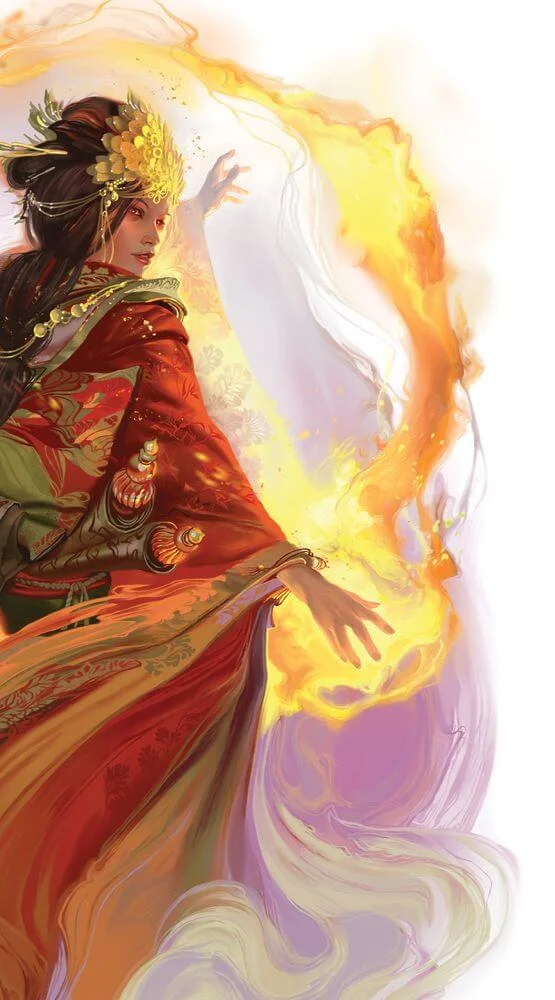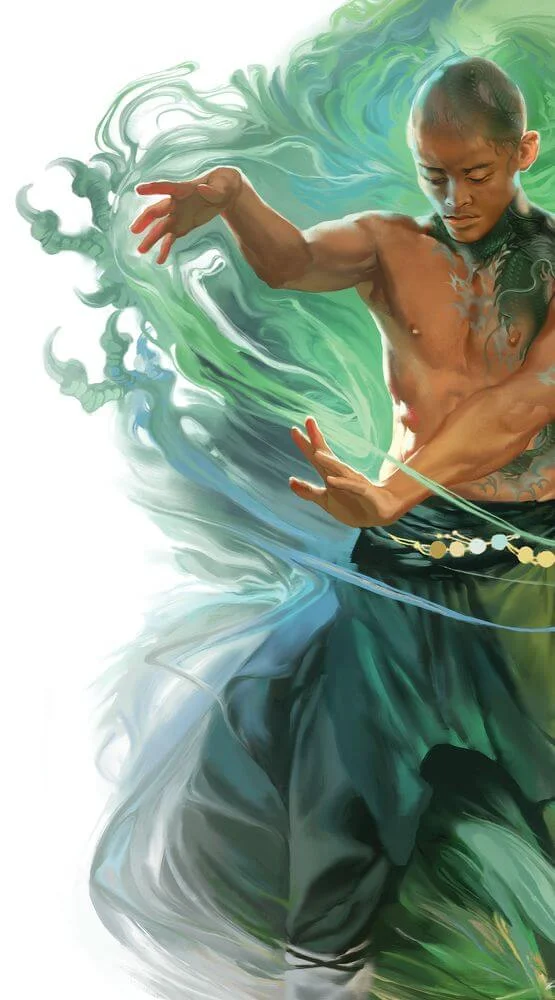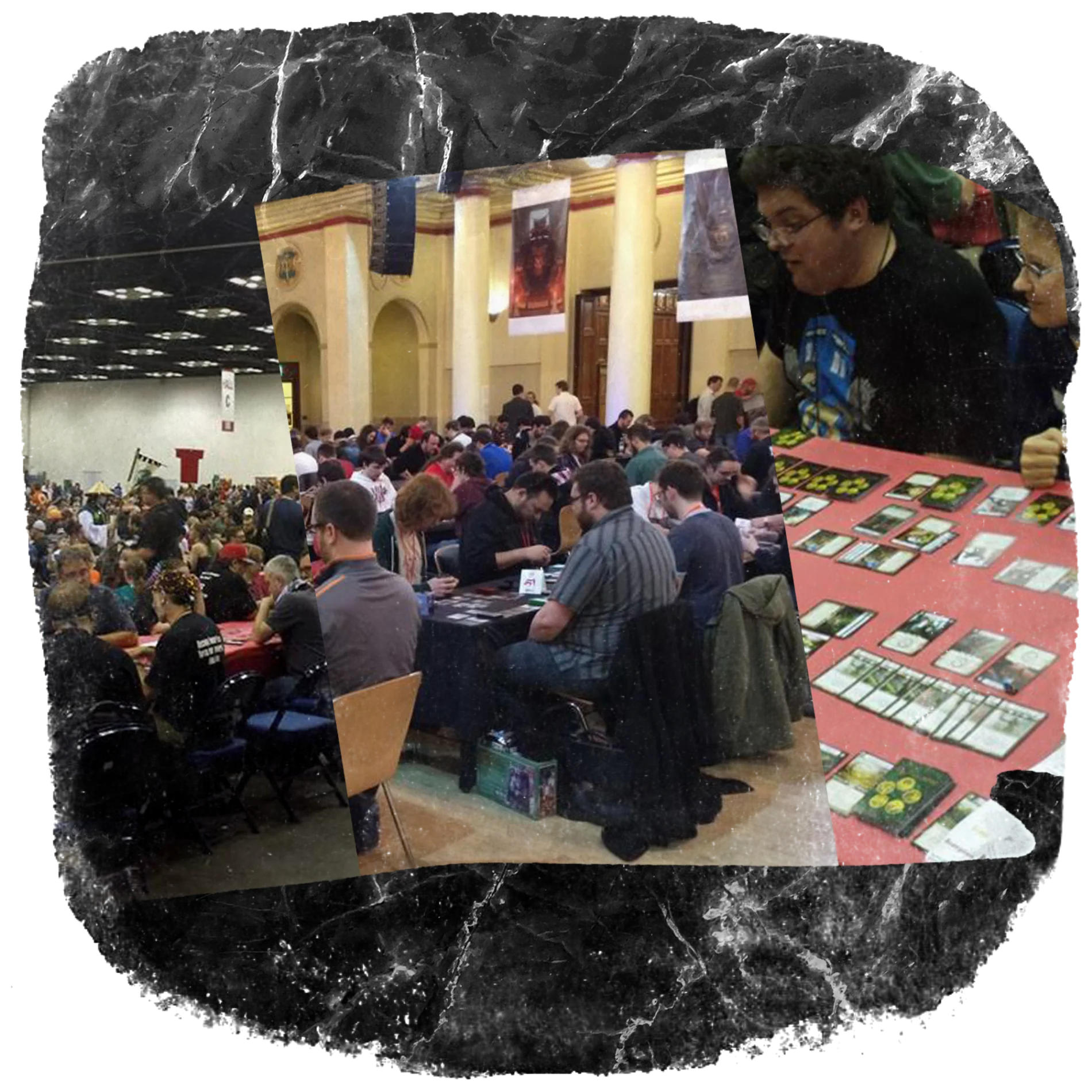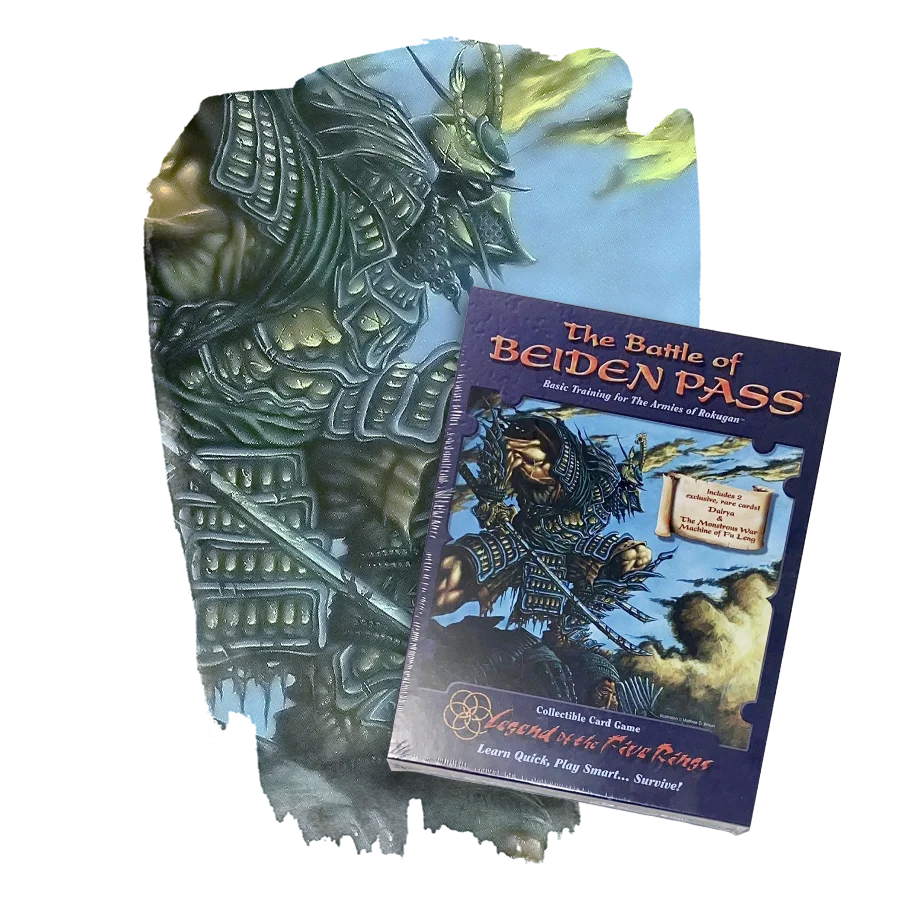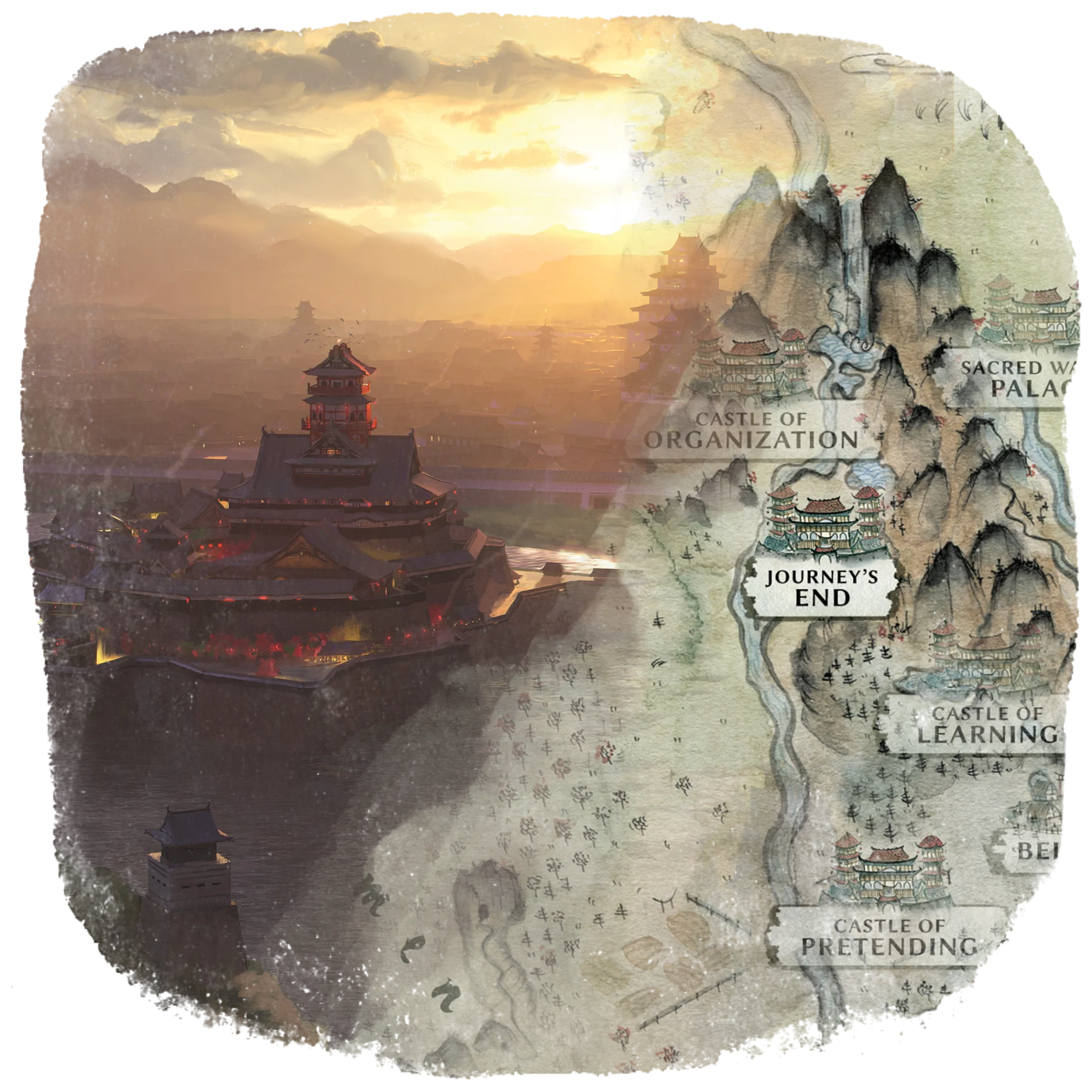The Kolat Master and the Shadow Samurai
A Tale of the Early Clan War Story Prizes
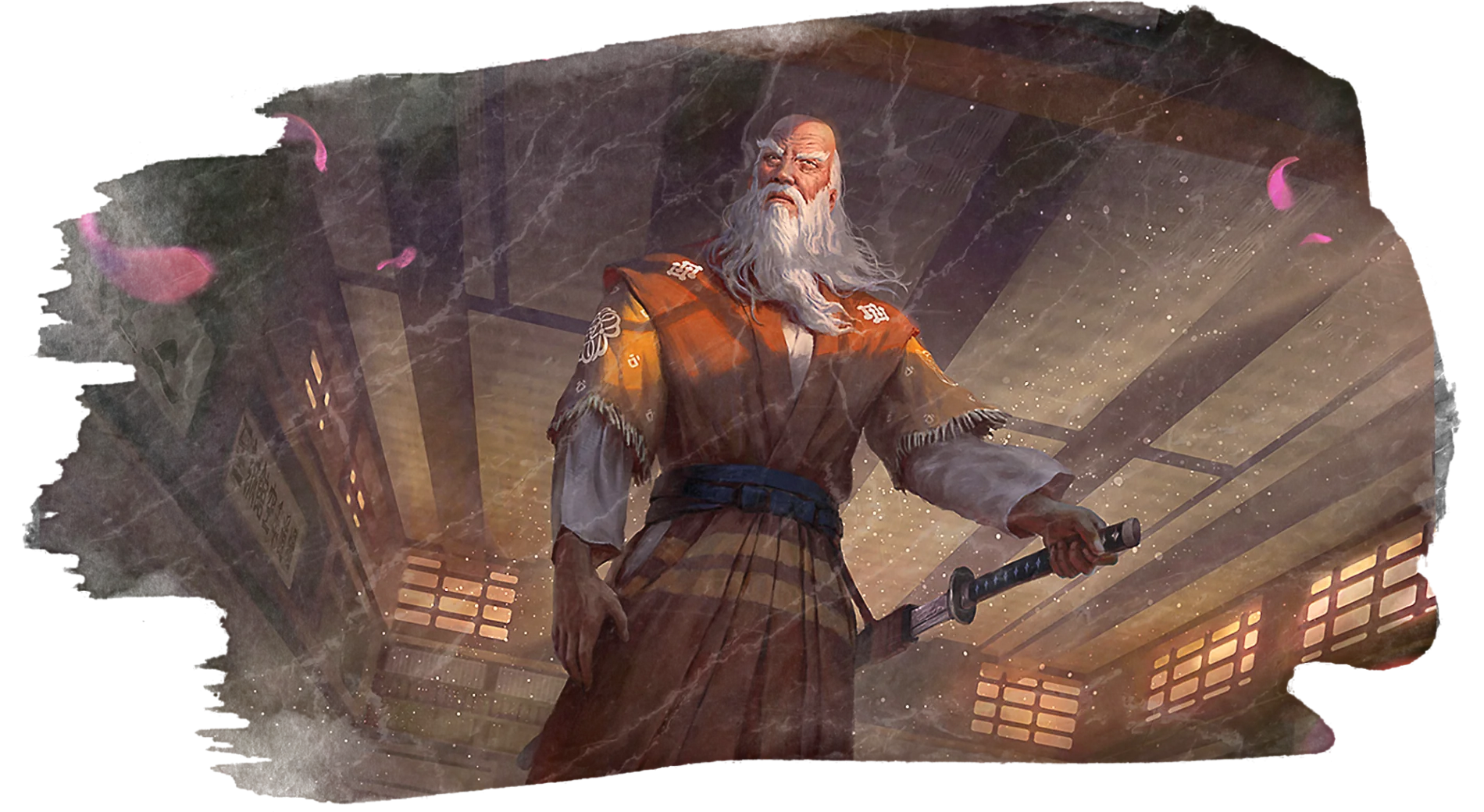
In our last two articles covering the history of the early Clan War story prizes, including the Test of the Emerald Champion and the Return of the Fallen Lord, the card game’s tournament winners were the ones who shaped the arc of the ongoing storyline. But tournaments were not the only way players could affect the game’s metaplot. Members of the official fan club, the Imperial Assembly, were also invited to weigh in periodically through votes held in the Imperial Herald, the official L5R magazine. In today’s article, we explore two fateful choices and the ripple effects they had: one featuring a conspirator, and the other a hero returned from death.

Conspiracy Among the Clans
As subtle as a Scorpion and as daring as a Lion, the Kolat have manipulated the clans of the empire by their own diabolical means. For centuries, theirs has been an unknown power in Rokugan.
All of that is about to change. Now, the Kolat are revealing their most dreaded weapon: one of the clans listed below has a Kolat Master in their midst. Which clan will feel the cold bite of Kolat treachery?
You will decide.
The Kolat is an ancient secret society with sects that crisscross Rokugan—no one knows how far the Kolat’s reach truly extends. Its members come from all strata of society, from the highest echelons of nobility down to the lowliest beggar. Although each sect has its own goals and methods to achieve their ends, the Kolat is united by a common purpose: to free humanity from the yoke placed upon them by the Celestial Siblings, and to overthrow the ruling Hantei dynasty. They work toward ending the importance of bloodlines and divinely ordered hierarchies, so that mortals might be able to rule themselves. To accomplish this, the Kolat Masters long ago established a network of spies, secret cells, and deadly assassins, and they protect their communication by using ciphers.
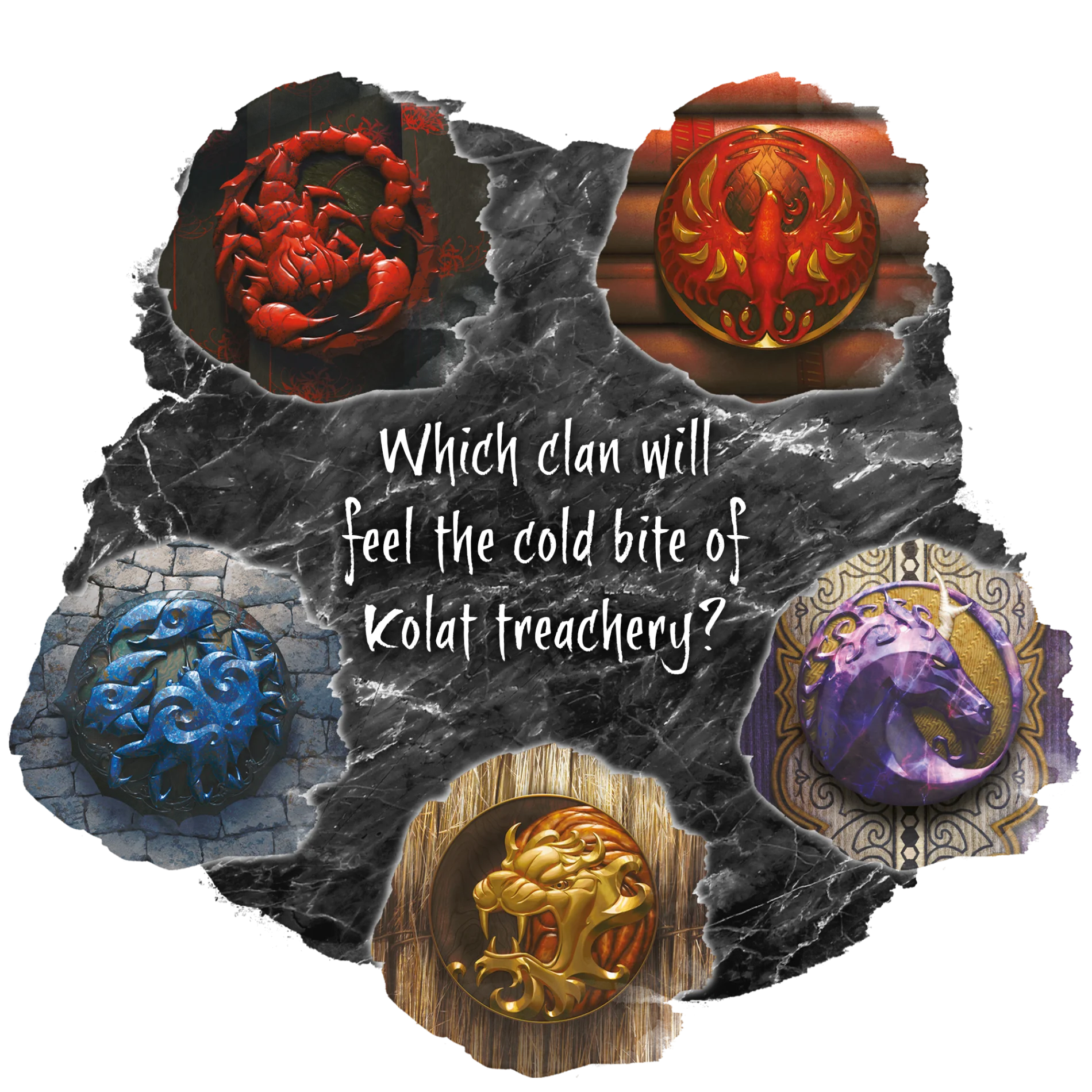
Kolat cards began appearing in the card game from the very first set, with cards titled “Kolat Servant,” “Kolat Infiltrator,” “Kolat Assassin,” and “Kolat Master.” In the second issue of the Imperial Herald, the story point “Kolat, Kolat, Who’s Got the Kolat?” was opened up to fans, who got to decide through a vote which of the clans unwittingly had a powerful Kolat conspirator among their ranks.
After all the votes were cast, the Lion Clan samurai Akodo Kage was chosen and subsequently revealed as a Kolat Master. He received a new card (an “experienced” version of the old Akodo Kage card), and the reputation of the virtuous Lion Clan was stained by Kage’s treachery. Kage provided intelligence to Bayushi Kachiko, by then the Empress of Rokugan, which allowed her to orchestrate the defeat of imperial troops on the fields outside Otosan Uchi led by Matsu Tsuko, as well as the thwarting of the rōnin leader Toturi’s attempts to provide aid to the Crane Clan in its most desperate hour. From Kage’s point of view, he was acting against the emperor and the divine bloodlines of the clans, setting the stage for the Kolat to one day topple the social order.
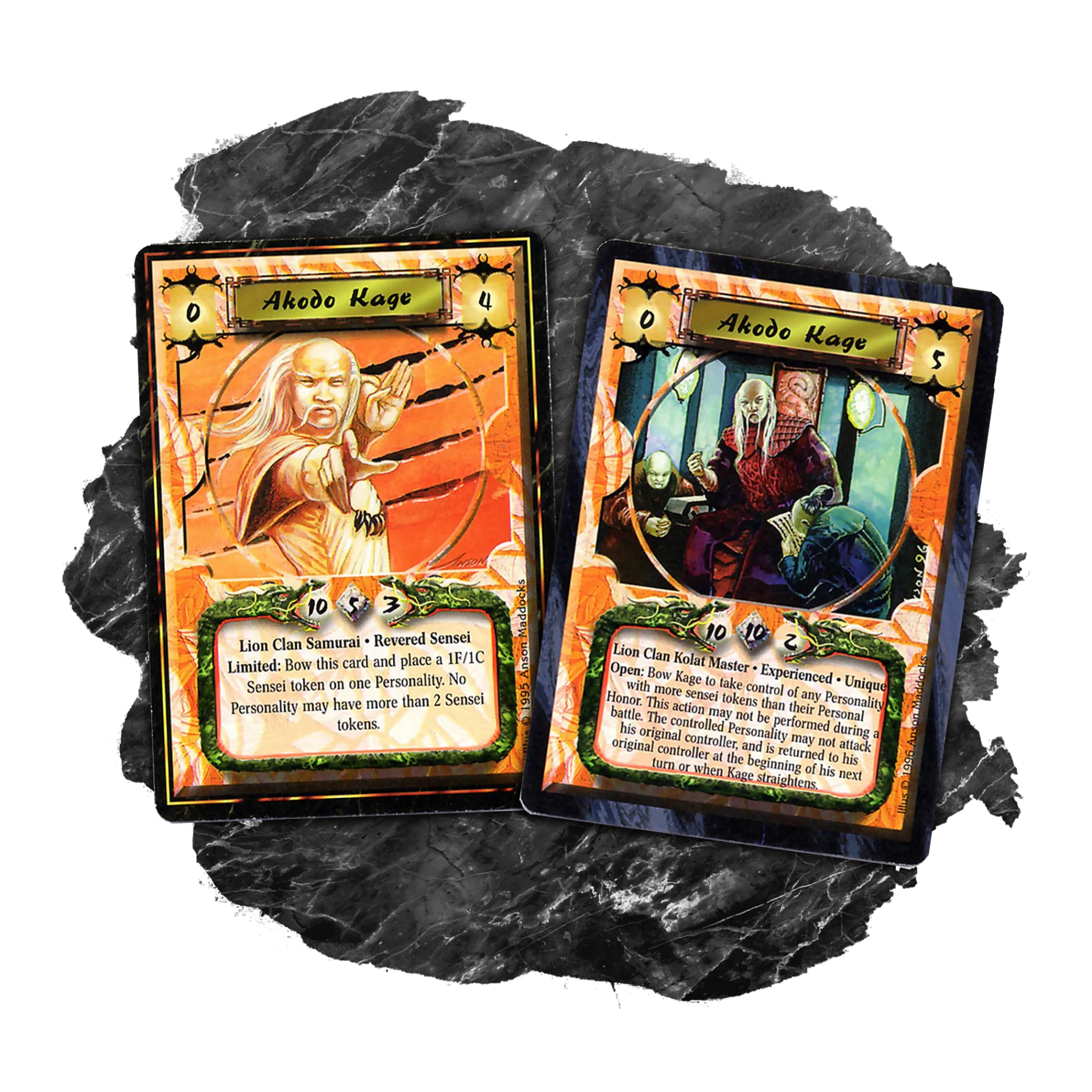
Kage’s legacy as a Kolat Master extended past the famed Day of Thunder tournament. In September of 1998, the Return of the Kolat Master tournament was held at Gen Con UK. The winner determined which of the Great Clans had kept Kage hidden after he faked his own death, and which clan would benefit from Kage’s secret warning about a new threat to Rokugan. According to the records of Kitsu Sei (aka Neil Laughlin), the final match was fought between two Crane players, and Kage was revealed to have been hiding amongst that otherwise-upstanding clan.
Follower No Longer
“Heroes do not make themselves great. Greatness is thrust upon them.” – The Tao of Shinsei
From the card game’s very beginning with Imperial Edition, followers were cards that could attach to your personalities (or character cards), representing a character’s retinue, unit, or companion. Archers, scouts, and cavalry, and even goblins, trolls, and zombies could become followers of a player’s samurai this way. In the third issue of the Imperial Herald, some of the rarer followers were put up for a vote, with the follower that received the most votes being “upgraded” from a follower to a full-blown personality available only to members of the Imperial Assembly, the official L5R fan club at the time. Readers were asked to choose between the “Apprentice,” the “Foxwife,” the “Personal Champion,” the “Scout,” and the “Shadow Samurai” when deciding which to name as a hero.
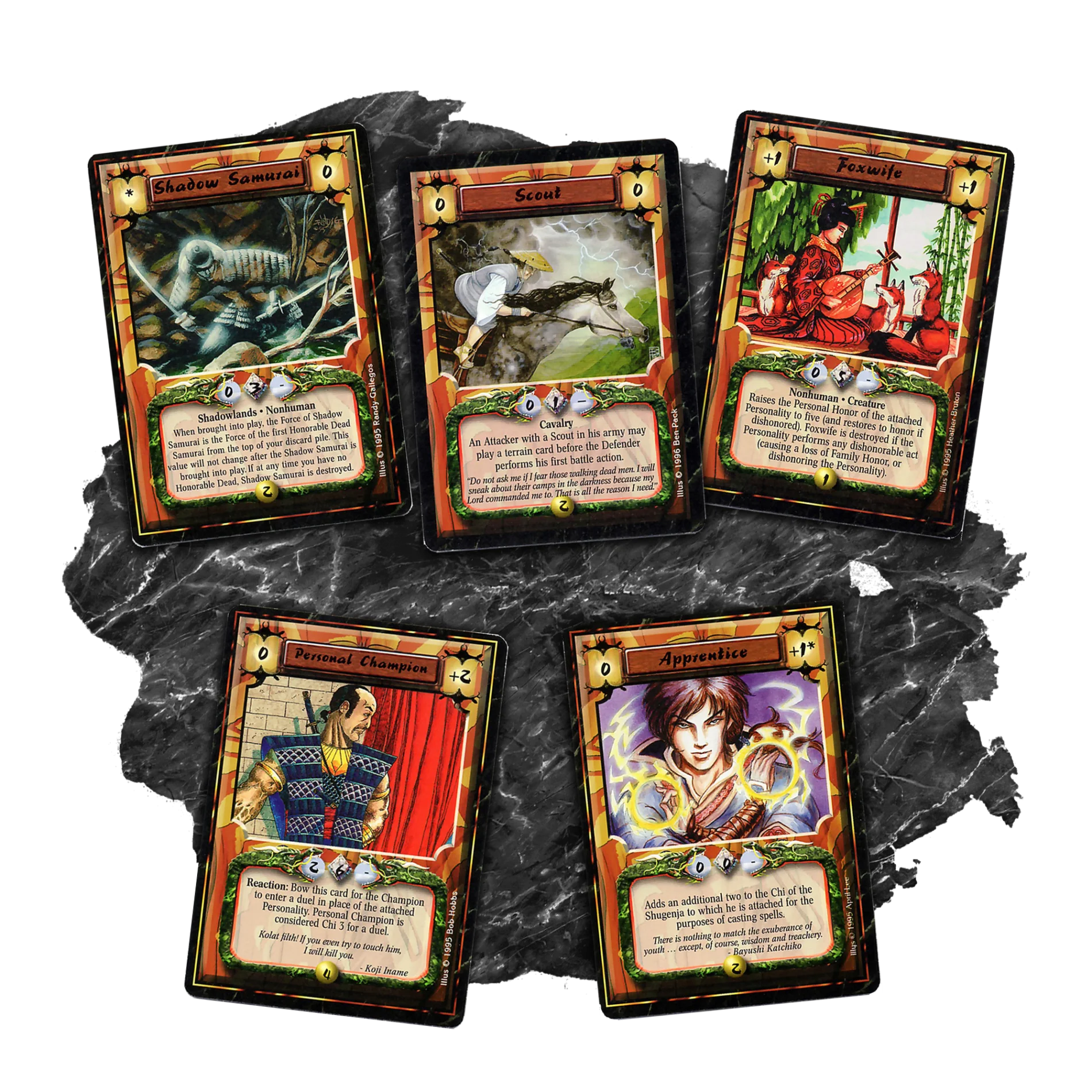
In the end, the contest was so close that the editors of the Imperial Herald declared two winners: the “Foxwife” would become a hero known as “Lady Kitsune,” and the “Shadow Samurai” would become an experienced version of the character “Hida Sukune.” Little is known about the character of Lady Kitsune, save that she was quoted several times in the flavor text of future card sets. However, Hida Sukune became an iconic—and tragic—character from the era.
In the early days of the collectible card game, Hida Sukune was a tactician and general from the Crab Clan, wearing a distinctive helmet in the shape of a crab’s shell. In the story, he was the son of the clan champion and one of the Crab Clan’s tacticians and generals. During those days, the Crab had allied with the Shadowlands Horde, forging a dark pact with their ancient enemies. The Crab’s sinister spiritual advisor, Kuni Yori, had even bestowed upon Sukune’s older brother a claw of corruption to replace his lost hand. Yet Hida Sukune did not embrace his clan’s new allies—he looked to the Shadowlands with suspicion, knowing that his father had struck a deal with something unspeakable.
Sukune was tasked with leading an army of Crab warriors and Shadowlands monstrosities north to besiege the capital and capture the emperor’s palace—Sukune’s father Hida Kisada saw the emperor as weak and undeserving of the throne. However, some of the clans and a handful of heroes defended Rokugan against the Crab’s assault, pushing them back at the legendary Battle of Beiden Pass. Sukune lost the battle and, for his failure, was sacrificed by Kuni Yori in a dark ritual to bolster the Crab’s forces. His corpse was infamously strapped to pennant and was paraded about as the Terrible Standard of Fu Leng, the Shadowlands’ war banner. But that would not prove the end to Sukune’s tale.
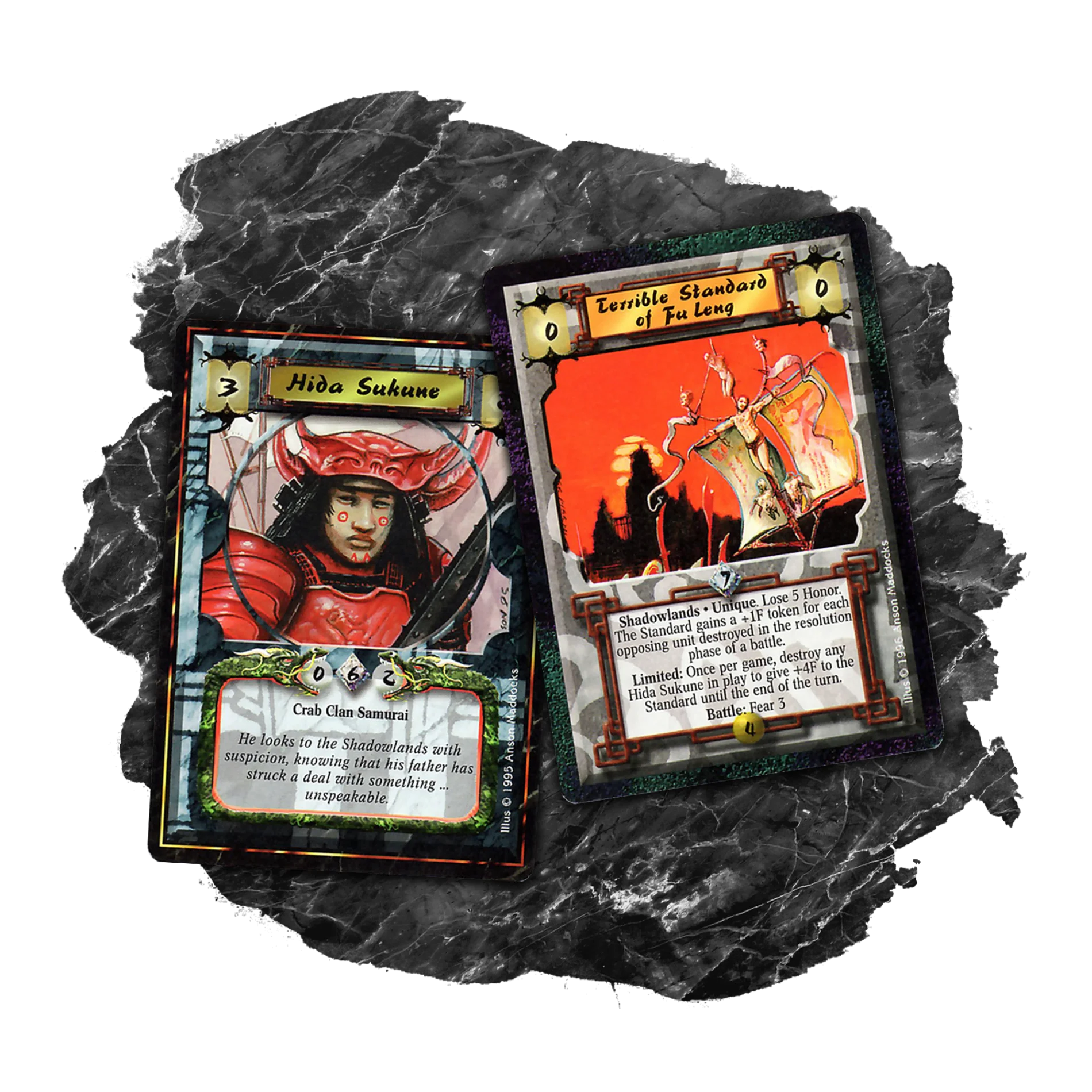
The “Shadow Samurai” card represented the ghost of a samurai who had fallen in the Shadowlands. Unlike most who perished in that blighted realm, however, a shadow samurai found their way to the underworld, and then fought their way back out. They retained the knowledge and skills they possessed in life, and when they finally returned to the Mortal Realm, they would seek vengeance against the living. A few of these spirits—likely those who were purest of heart in life—retained their virtue and remained uncorrupted by the Shadowlands Taint.
When the Shadow Samurai received the most votes in the contest, the story team revealed that Hida Sukune had returned from death as a shadow samurai, and an experienced version of Hida Sukune with that trait became a personality available only to Imperial Assembly members as a promo card. Perhaps the story team chose Sukune to return because his death was among the most tragic in the story so far, or perhaps Sukune had been popular among the player base and featured in many of the Crab decks that competed in those tournaments. Either way, over the course of the story, the spectral Sukune would go on to prove himself a loyal ally of Toturi the Rōnin, lending his tactical acumen to Toturi’s Army in several pivotal battles.
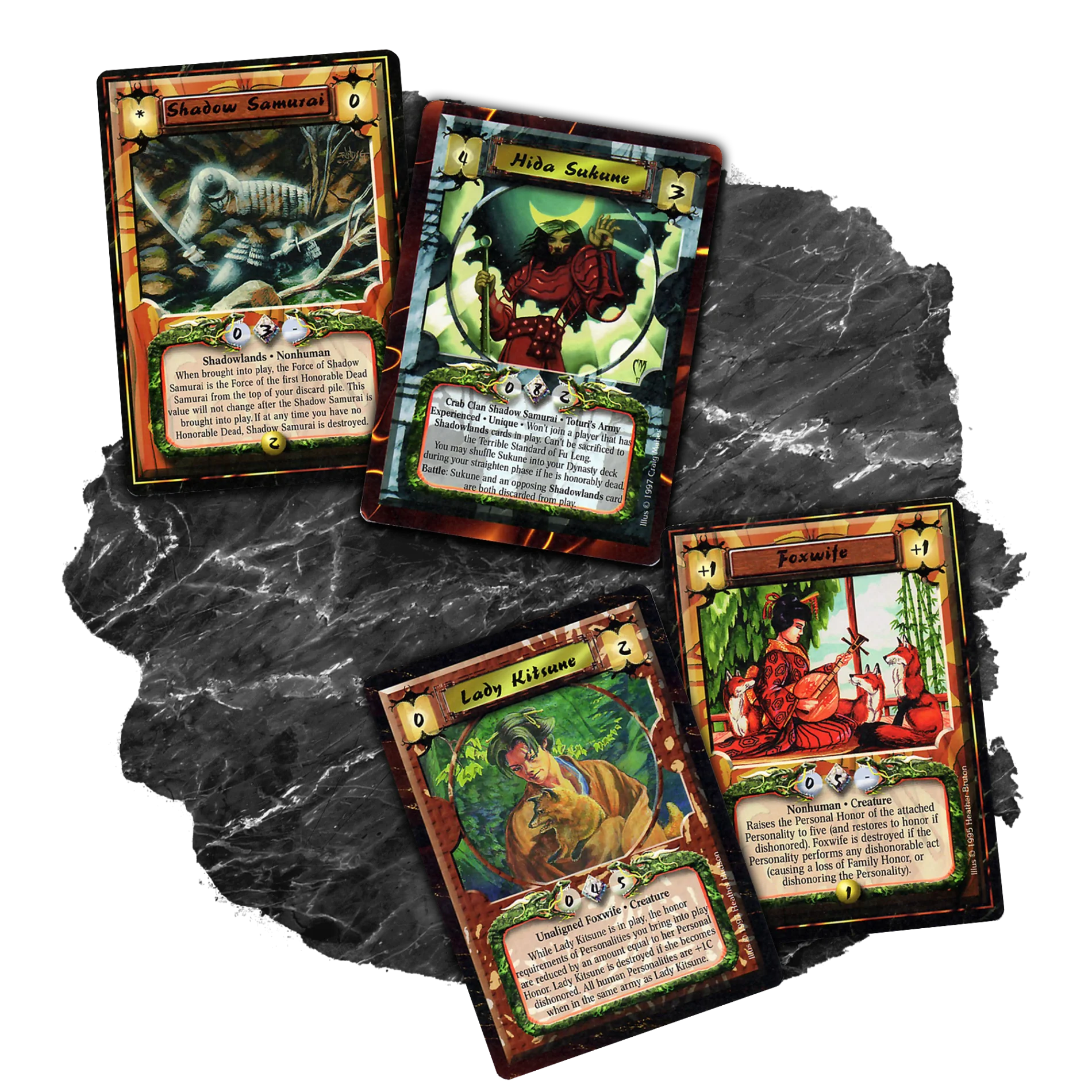
In the new Clan Wars storyline that began this year, Hida Sukune is one of two playable characters in Shadowveil: Legend of the Five Rings, a single-player roguelite video game from Palindrome Interactive, and he might also appear in the upcoming Clan Wars novel from Julie Kagawa and J.T. Nicholas… Fans of Akodo Kage should keep an eye out for him in upcoming products!


